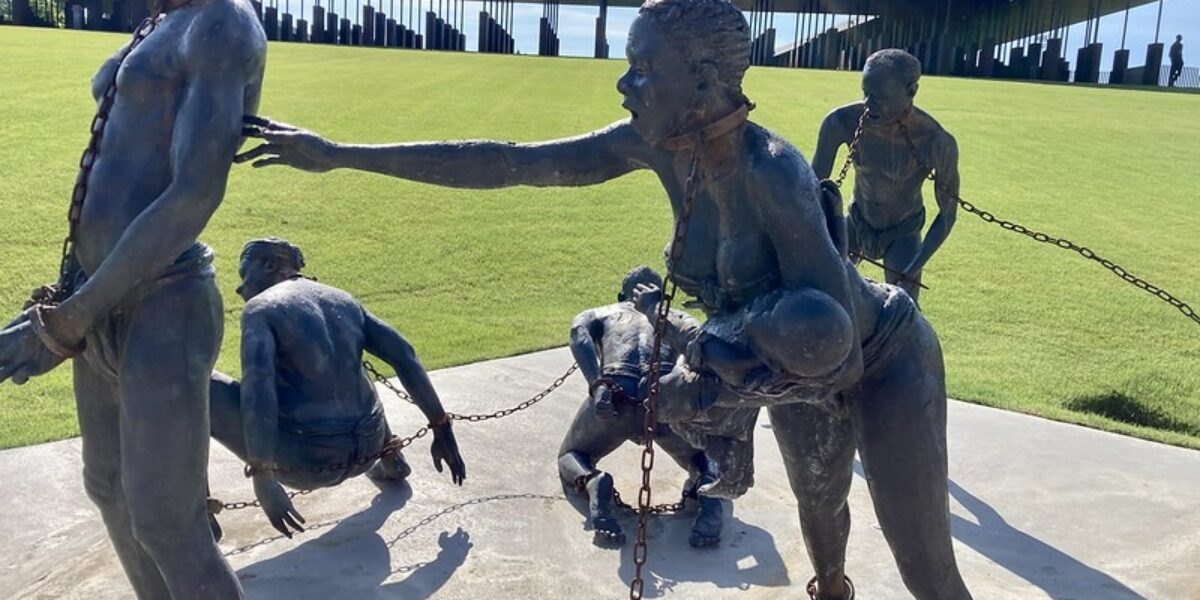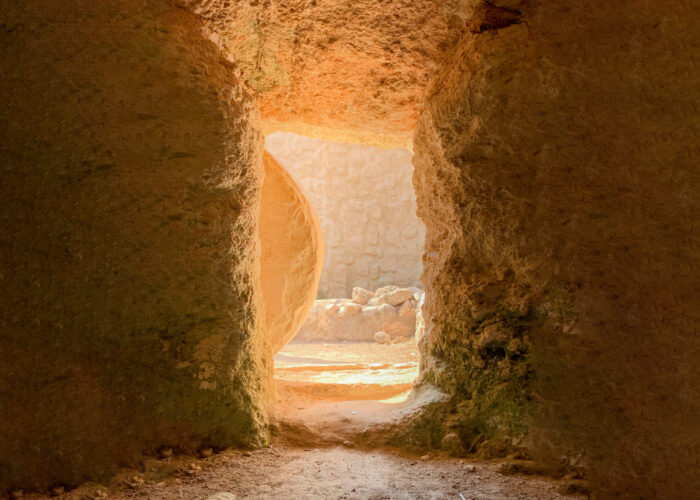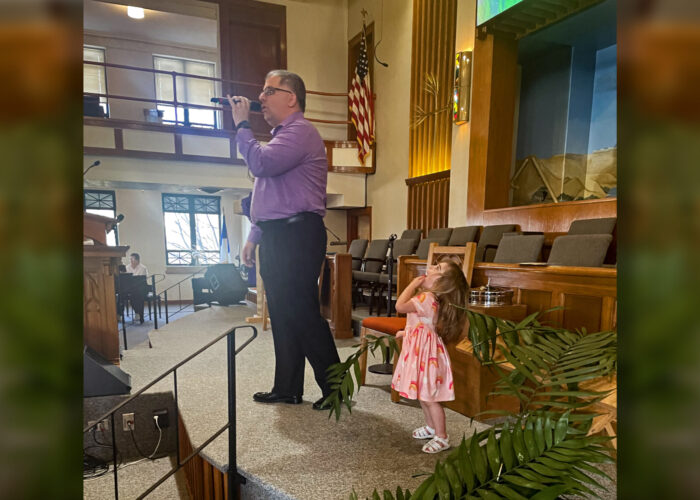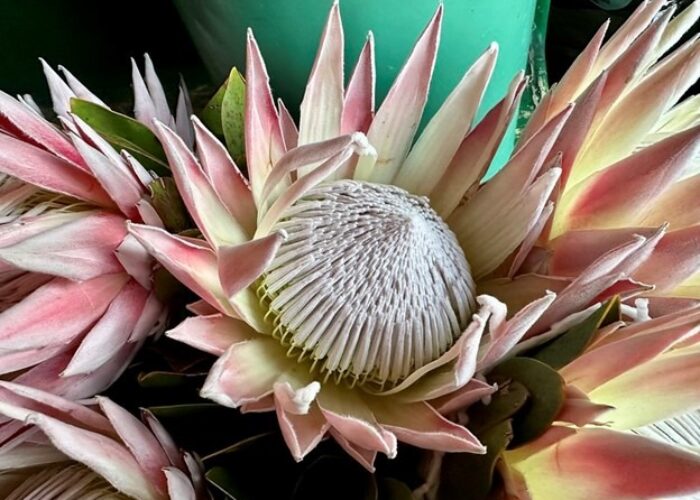Jennifer Murch participated in the Just Peace Pilgrimage Civil Rights Learning Tour in April 2023. Her thoughts are broken down into six blogs, spanning all six days of the tour. Read days one and two here.
By Jennifer Murch
At the National Memorial for Peace and Justice, also known as the Lynching Memorial, in Montgomery, I was struck by its simplicity.
The architecture looked industrial with its straight lines and drab colors — boring, almost. Just an outdoor pavilion with a maze of vertical, rusty-colored rectangles with the names of counties and states at the top of each, followed by the list of the names of the people who’d been lynched and the date they died.
 We meandered through the columns reading the dates and catching hints of stories: the clusters of people lynched on the same day, the family groups, the women. And then we turned the corner, and the floor began to slope downward and the boxes began to rise up.
We meandered through the columns reading the dates and catching hints of stories: the clusters of people lynched on the same day, the family groups, the women. And then we turned the corner, and the floor began to slope downward and the boxes began to rise up.

By the time we got to the bottom and turned the corner again, the boxes were hanging high overhead, the engraved names hard to decipher, the names of the counties now on the bottom.

My son wondered to me if they were modeling the design after the African American History museum in Washington DC, in the sense that the space was changing in such a way as to make you feel the story — and he was exactly right: the boxes lifting up, all those people gone, leaving us behind with our heads thrown back looking up after them. Hanging boxes; hanging bodies. Talking about it to my husband later, I found myself crying.

In the courtyard was a mound, and atop it a simple square of wood to symbolize the very public ways in which the enslaved people were humiliated and lynched. In the yard surrounding the memorial were the boxes again, this time in long rows on the ground, like caskets.

They went on forever.

There was also a section with plaques of the community remembrance project — markers honoring communities that have done the hard work of truth telling through the Equal Justice Initiative.
From there we took the shuttle to the Legacy Museum.

The way the museum was structured, visitors enter at one end and wind around through enormous rooms, everyone moving in the same direction and with no outside light to indicate where you are, what time it is, or how much more ground you need to cover. In other words, one must go through it to go through it; no skipping around.
The material in the museum was so interactive and immersive that I kind of got lost in it. At one point when I noticed I was getting hungry and was debating whether to wait until I finished to go eat, I approached a guard to ask where we were in the museum. About a third of the way through, she said. Needless to say, we broke for lunch (which meant leap frogging from guard to guard until we reached the end, got a wristband from the last guard, went to eat our lunch, and then reentered back at the beginning).
Things that stood out to me: The sound of water. Walking down a corridor lined with head sculptures of the enslaved people by Ghanian artist Kwame Akoto-Bamfo*. The columns of ads of people for sale. The wall filled with lynching stories, and the wall filled with shelves of gallon jars — each jar filled with soil from a different lynching site. Watching Fannie Lou Hamer’s full (I think) testimony. The sound of gunshots, unrelenting. Picking up the phone and listening to prisoner after modern-day prisoner tell their story.
I kept thinking about how this museum compared to the African American museum in DC. They both covered a lot of the same material, and this one was a lot smaller in size, yet somehow this one felt much more intense, perhaps because the focus was on the fallout from slavery: its legacy. Yet somehow, even though the information was deeply disturbing and heavy, I didn’t feel traumatized. Drained and fragile, yes, but not battered. It was one of the most engrossing, intense, and informative museum experiences I’ve ever had, period.
The Legacy Museum is an important place — for all of us. If you get a chance to visit, do it.
*This 15-minute video tells the origin story of the head sculptures, and here is a video about the making of the sculptures from the first photo:





